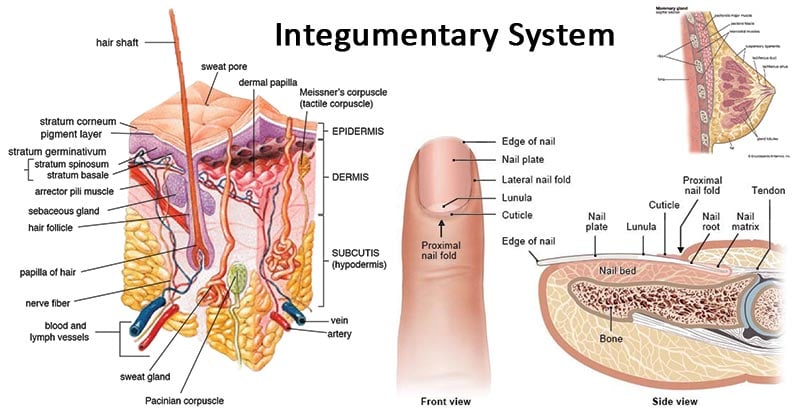
How Does the Integumentary System Help Regulate Body Temperature?
The integumentary system, often thought of as the body’s outer covering, is a complex and multifunctional organ system that encompasses the skin, hair, nails, and associated glands. While its primary role is to serve as a protective barrier against external threats, the integumentary system also plays a crucial role in regulating the body’s temperature. This intricate temperature regulation mechanism is essential for maintaining homeostasis and ensuring the body functions optimally. In this comprehensive article, we will explore the various ways in which the integumentary system helps regulate body temperature.
Understanding Body Temperature Regulation
Before delving into the specifics of how the integumentary system regulates body temperature, it’s essential to understand the basics of thermoregulation.
Normal Body Temperature: The human body’s normal temperature is approximately 98.6 degrees Fahrenheit (37 degrees Celsius). Maintaining this temperature is vital because many biochemical reactions and metabolic processes are temperature-dependent.
Thermoregulation: Thermoregulation is the process by which the body maintains its core temperature within a narrow, optimal range. It involves a delicate balance between heat production and heat loss.
Hypothalamus: The hypothalamus, a region in the brain, acts as the body’s thermostat. It constantly monitors the core temperature and sends signals to initiate mechanisms to either dissipate or conserve heat, depending on the situation.
Ways the Integumentary System Regulates Body Temperature
The integumentary system contributes to thermoregulation in several ways:
1. Skin Blood Flow Regulation
The integumentary system helps regulate body temperature by controlling blood flow through the skin’s blood vessels. When the body needs to dissipate excess heat, the blood vessels in the skin dilate (vasodilation), allowing more blood to flow near the body’s surface. This facilitates heat transfer from the core to the skin, where it can be radiated into the environment.
Conversely, in cold conditions, the blood vessels constrict (vasoconstriction), reducing blood flow to the skin’s surface. This conserves heat and prevents excessive heat loss.
2. Sweating
One of the most efficient mechanisms of cooling the body is sweating, which is controlled by sweat glands in the skin. When the body becomes overheated, the sweat glands produce sweat, primarily composed of water and electrolytes like sodium and chloride. As this sweat evaporates from the skin’s surface, it absorbs heat, effectively cooling the body.
3. Pilomotor Reflex
The integumentary system also contributes to temperature regulation through the pilomotor reflex, commonly known as “goosebumps.” When the body is exposed to cold temperatures, tiny muscles at the base of hair follicles contract, causing the hair to stand on end. This creates an insulating layer of trapped air, which helps retain heat.
4. Insulation
The skin, along with its subcutaneous layer (the layer of tissue just beneath the skin), serves as an insulating layer that helps prevent heat loss in cold conditions. The thickness of this layer varies among individuals and plays a role in how effectively they maintain body temperature in different climates.
5. Temperature Sensing
The skin is equipped with thermoreceptors that detect changes in temperature. These receptors provide constant feedback to the hypothalamus, allowing the body to make real-time adjustments to maintain temperature homeostasis.
6. Radiating Heat
In hot conditions, the skin radiates excess heat away from the body. This heat loss occurs through the skin’s surface and is crucial for preventing overheating.
Conclusion
The integumentary system’s role in regulating body temperature is a testament to the complexity and adaptability of the human body. Through mechanisms like blood flow regulation, sweating, pilomotor reflex, and insulation, this system helps maintain the body’s core temperature within a narrow, optimal range. Whether it’s cooling down through sweating on a hot summer day or conserving heat in chilly weather, the integumentary system plays a vital role in ensuring our bodies function optimally, regardless of the external temperature conditions. Its ability to adapt to changing environments is a testament to the remarkable efficiency of the human body’s regulatory mechanisms.



